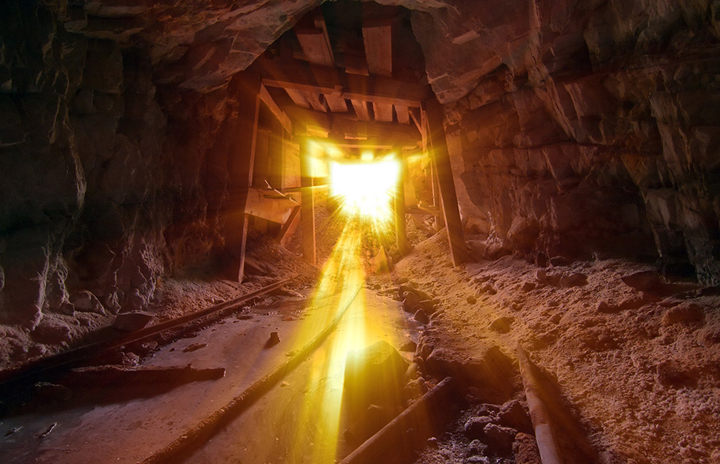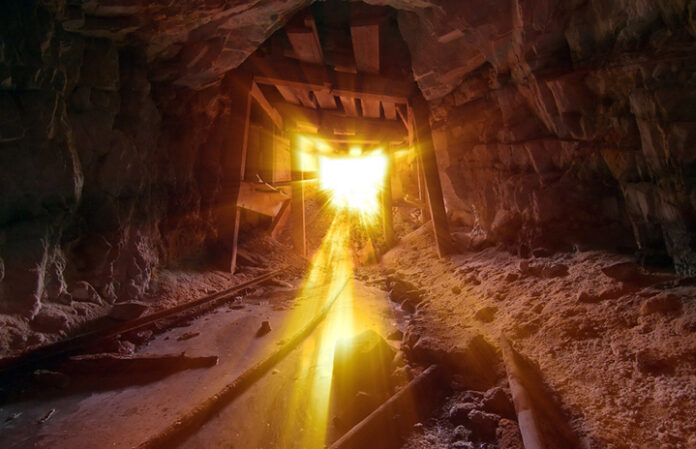
THE lifting of the moratorium on new mining agreements following the signing of Executive Order (EO) 130 by President Duterte offers a glimmer of hope for the mining industry with the promise of boosting the government’s recovery effort amid the raging Covid-19 pandemic.
EO 130, which amended Section 4 of former President Benigno Simeon Aquino’s EO 79 signed on July 6, 2012—pertaining to the “Grant of Mineral Agreements Pending New Legislation”—ended the nine-year mining moratorium, which also held in abeyance new mining projects.
The Department of Environment and Natural Resources (DENR), through the Mines and Geosciences Bureau (MGB), is now working to draft the new EO’s implementing rules and regulations (IRR) to proceed with the processing of 100 priority mining agreements or projects.
Taken by surprise
ANTI-MINING groups immediately slammed the lifting of the moratorium on new mining agreements.
Bantay Kita said the issuance of EO 130 lifting the mining moratorium has taken many stakeholders by surprise, and alleged that it was issued without any prior consultation with relevant stakeholders.
“EO 130 cites the increase of the excise tax from 2 percent to 4 percent (as contained in RA 10963 or TRAIN law) as the justification for the lifting of the moratorium. This minor increase in excise tax is not the type of ‘[rationalization of] existing revenue sharing schemes’ that was contemplated by EO 79,” the group pointed out.
Alyansa Tigil Mina (ATM), for its part, branded Duterte’s order as “another incompetent Covid-19 response.” The group said it will only serve the business interests of a few in power and not the Filipino people.
“A just recovery from Covid-19 can only be achieved by sustainable solutions. Mining is the very opposite of sustainable. It has long proven to be destructive—many lives were lost to mining-related disasters and the environment permanently destroyed. This is a disastrous Earth Day for mining-affected communities,” Jaybee Garganera, Green Thumb Coalition convener and ATM national coordinator, said.
Mining’s ‘Big 3’
THIS early, mining industry’s big players under the Chamber of Mines of the Philippines (COMP) are hopeful that new investments will start to flow that would give the sector a much-needed boost.
At least three big copper-gold projects of COMP member-companies alone—Silangan, as well as Tampakan and King-King—are expected to bring in a total of nearly $5 billion total capital investments spread over several years.
Such projects in rural areas are expected to generate hundreds of jobs, plus the indirect jobs in the form of livelihood and other employment opportunities.
This is assuming that the Tampakan and King-King will hurdle former DENR Secretary Gina Lopez’s open-pit mining ban, considered as the biggest stumbling block facing mining companies, according to Rocky Dimaculangan, COMP’s vice president for corporate communications.
Annual exports, revenues
THE annual exports from these three projects are estimated at nearly $2 billion, while the annual national government revenues have been pegged at P12 billion.
Local government units (LGUs) also stand to receive P1.5 billion from these mining projects.
On the other hand, the social expenses of these three big-ticket projects are estimated at P770 million, while royalties that will go to indigenous peoples are pegged at P632 million.
Stumbling block
THESE companies, however, need to hurdle stumbling blocks to start operation.
The open-pit mining ban put in place by Lopez in handing down DAO 2017-10 on April 27, 2017, remains the biggest challenge faced by miners.
The ban covers select ores, including gold, copper, silver and complex ores.
Both King-King and Tampakan prefer the open-pit mining method.
Proponents of the Silangan project had decided to use the tunneling method and secured the clearance from the DENR-MGB.
‘Not to worry’
MGB Director Wilfredo Moncano, in a telephone interview with the BusinessMirror, told industry players “not to worry.”
“Sabihin mo lang [Tell them] don’t worry,” Moncano said. The official, however, stopped short of saying the ban on open-pit mining method will also be lifted soon.
“What I can say is that a working group is working on it in the DENR,” he said.
Moncano, however, said any decision on the issue of open-pit mining will depend on the appreciation and recommendation of DENR Secretary Roy A. Cimatu to Malacañang.
“Of course, it will all depend on Secretary Cimatu’s decision,” he said.
Moncano has been vocal in supporting the mining industry in its calls to reverse alleged anti-mining policies put in place by Lopez, which include the mining audit that saw 26 mining projects having been canceled or suspended, cancellation of 75 inactive Mineral Production and Sharing Agreements (MPSA) and one Financial and Technical Assistance Agreement (FTAA) and the open-pit mining ban.
Positive sentiment, investment climate
WITH Duterte’s change of heart in lifting the ban on new mining agreements, there’s also renewed hope among industry players on the issue of the open-pit mining method.
Philex Mining public and regulatory affairs head Francis Joseph G. Ballesteros Jr. said with Silangan, the company is still pursuing and working with its financial advisor to identify and sign up a strategic business partner.
“Hopefully, EO 130 would somehow encourage investor interest in the project,” Ballesteros said.
He said while EO 130 did not directly benefit Silangan as the company has no new agreements in sight yet, the benefit to the project is in terms of investment climate.
Kaycee Crisostomo, director for communications of King-King, said the company is pleased with the positive developments and hoped that the potential investors in its project will also be encouraged.
“The project will benefit from the overall positive sentiment for new mining projects and the restoration of confidence among foreign direct investors,” Crisostomo said.
Necessary form of mining
COMP has been conveying member-companies’ sentiment against Lopez’s open-pit mining ban.
For COMP, the method of mining is dictated by the nature of the ores.
“The open-pit method is a necessary form of mining in most areas where underground mining cannot be applied,” Dimaculangan said.
“The shape, nature and location of the ore body determine the mining method. In the case of open-pit mining, the ore is either on the surface or close to it, therefore necessitating an extractive approach from above ground and not from under it,” he explained.
Legal basis
DIMACULANGAN also noted the Mining Act of 1995 allows the implementation of open-pit mining.
“There are economic, safety and environmental considerations for employing this method. Thousands of mines worldwide have adopted this primary method, including Australia, Canada, China, Brazil and the USA. We are the only country in the world that bans this method,” he said.
Lastly, Dimaculangan said open-pit mines can be operated safely by following globally accepted standards and mined-out areas that “can be rehabilitated properly in a manner that provides alternative and productive land use after the life of the mine.”
Image courtesy of Neillockhart | Dreamstime.com
Read full article on BusinessMirror



